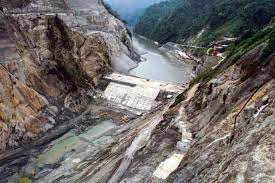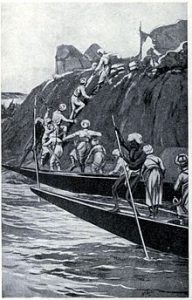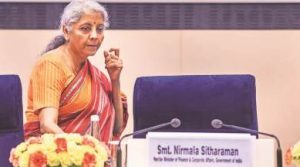Today Current Affairs:9th June 2022 for UPSC IAS exams, State PSC exams, SSC CGL, State SSC, RRB, Railways, Banking Exam & IBPS, etc
Table of Contents
Jan Samarth Portal:

Prime Minister Narendra Modi urged bank chiefs to make it easier for people to get loans through the new Jan Samarth portal, a repository of a dozen credit-linked government schemes.
- He said the new portal would make life easier for farmers, students and entrepreneurs as they could assess which scheme worked best for them, on that platform instead of visiting various websites.
- Finance and Corporate Affairs Minister Nirmala Sitharaman said as of now, 12 credit schemes that granted credit from banks were on the portal, to ensure that citizens need not answer the same questions whenever they applied for schemes.
Etalin Hydro Power Project:

Wildlife scientists and conservationists in Arunachal Pradesh flagged threats to local biodiversity from the proposed Etalin hydroelectric (3,097 MW) project in Dibang Valley.
- To raise the issue,they approached the Forest Advisory Committee (FAC) under the Union Ministry of Environment, Forest and Climate Change (MoEF&CC).
- WildLIfe Institute of India (WII) and the National Tiger Conservation Authority (NTCA) have suggested taking cognizance of certain safeguards and mitigation measures while considering project approval.
- FAC ordered the formation of a four-member committee to address apprehensions concerning wildlife as well as endemic flora and fauna of the area in a holistic manner.
- The Project is based on the river Dibang and is proposed to be completed in 7 years.
- Dibang is a tributary of the Brahmaputra River which flows through the states of Arunachal Pradesh and Assam.
- It envisages construction of two dams over the tributaries of Dibang: Dir and Tangon.
- The Project falls under the richest bio-geographical province of the Himalayan zone and would be located at the junction of major biogeographic zones like Palearctic Zone and Indo-Malayan Zone.
- It is expected to be one of the biggest hydropower projects in India in terms of installed capacity.
Environment Performance Index 2022:

In the recently released Environment Performance Index-2022, India was at the bottom among 180
- The Environment Performance Index (EPI) is an international ranking system that measures environmental health and sustainability of countries.
- The EPI, a biennial index, was started in 2002 as Environmental Sustainability Index by the World Economic Forum in collaboration with the Yale Center for Environmental Law and Policy and the Columbia University Center for International Earth Science Information Network.
Key Highlights:
- Denmark tops the 2022 rankings — an achievement rooted in strong performance across nearly all issues tracked by the EPI, with notable leadership in efforts to promote a clean energy future and sustainable agriculture.
- The United Kingdom and Finland place 2nd and 3rd, both earning high scores for slashing greenhouse gas emissions in recent years.
- The United States places 20th out of 22 wealthy democracies in the Global West and 43rd overall.
- With a paltry score of 18.9, India’s 180th ranking comes after Pakistan, Bangladesh, Vietnam and Myanmar.
- India has also scored low on rule of law, control of corruption and government effectiveness, according to EPI.
- India was ranked 168th in EPI-2020, with a score of 27.6.
- In EPI-2020, Denmark has been ranked first in environmental health and sustainability
Food Safety Index: FSSAI:

On the occasion of World Food Safety Day, the Union Health Minister released Food Safety and Standards Authority of India (FSSAI)’s 4th State Food Safety Index (SFSI) to measure the performance of States across five parameters of food safety.
- Overall: Tamil Nadu topped the State Food Safety Index followed by Gujarat and Maharashtra.
- Among Smaller States: Goa stood first, followed by Manipur and Sikkim.
- Among UTs: Jammu and Kashmir, Delhi and Chandigarh secured first, second and third ranks.
- SFSI was started from 2018-19 with the aim of creating a competitive and positive change in the food safety ecosystem in the country.
- The index is developed by FSSAI (Food Safety and Standards Authority of India) to measure the performance of states on five significant parameters of Food Safety.
- The parameters include Human Resources and Institutional Data, Compliance, Food Testing – Infrastructure and Surveillance, Training & Capacity Building and Consumer Empowerment.
- The Index is a dynamic quantitative and qualitative benchmarking model that provides an objective framework for evaluating food safety across all States/UTs.
- The first State Food Safety Index for the year 2018-19 was announced on the first-ever World Food Safety Day on 7th June 2019.
Nuclear Suppliers Group (NSG):

External Affairs Minister S. Jaishankar recently said that India looks forward to join the Nuclear Suppliers Group (NSG) by overcoming political impediments.
- The 48-member NSG is an elite club of countries that deals with the trade-in nuclear technology and fissile materials besides contributing to the non-proliferation of nuclear weapons.
- Brought in 1974– in response to the Indian nuclear test (smiling Buddha).
- It is a Group of nuclear supplier countries that seek to prevent nuclear proliferation by controlling the export of materials, equipment and technology that can be used to manufacture nuclear weapons.
- The NSG first met in November 1975 in London, and is thus popularly referred to as the “London Club”.
- Its guidelines are not binding.
- Benefits associated with NSG membership- Once admitted, an NSG member state gets:
- Timely information on nuclear matters.
- Contributes by way of information.
- Has confirmed credentials.
- Can act as an instrument of harmonization and coordination.
- Is part of a very transparent process.
Job Charnock:

Recent archaeological excavations in Kolkata have provided further evidence of human habitation in the city from centuries before the time British administrator Job Charnock was said to have founded the city.
- Charnock worked for the East India Company.
- He was historically been credited with founding the city in 1690 when the Company was consolidating its trade business in Bengal.
- Between the 14th and 16th centuries, the area was under the rule of the Bengal Sultanate of the Mughals.
- The view about Charnock being the founder was challenged, and in 2003, Calcutta High Court declared that Charnock ought not to be regarded as the founder.
- It ordered the government to purge his name from all textbooks and official documents containing the history of the city’s founding.
- The court found that a “highly civilised society” and “an important trading centre” had existed on the site long before Charnock established his settlement.
- The site is mentioned in Bipradas Pipilai’s Manasa Mangala (1495) and Abul Fazl’s Ain-I-Akbari (1596).
Sievierodonetsk : Russia-Ukraine War

More than a 100 days after Russia began its invasion of Ukraine, it is the strategic eastern city of Sievierodonetsk that remains the focus of intense fighting in the battle’s current phase.
- Located nearly 140 km south of the Russian border, Sievierodonetsk is one of the largest cities of the Donbas region.
- It is located near the left bank of the Siverskyi Donets river, and has a population of over a lakh.
- Administratively, Sievierodonetsk falls under Ukraine’s Luhansk oblast (province).
- It is a big industrial hub known for chemical works and machine-building factories.
- If the city of Sievierodonetsk falls, then it will allow Russia to control the entire Luhansk region.
Yankti Kuti Valley:

Multiple events of glacial advances have been witnessed from the Yankti Kuti valley situated in the extreme eastern part of Pithoragarh district, Uttarakhand, since 52 thousand years (MIS 3) that synchronises with climate variability, according to a new study.
- Scientists of the Wadia Institute of Himalayan Geology, an autonomous institute of the Department of Science and Technology has reported first time the oldest glacial advance during 52 Kilo years from the Central Himalaya.
- They found that moisture-deficient valleys of semi-arid Himalayan regions respond sensitively to enhance precipitation.
- The study suggests a regional synchronicity of glacier response to climate variability since MIS 3.
- The study carried out was in accordance with the synoptic-scale, climatic perturbation triggered by the North Atlantic millennial-scale climate oscillations.
- The study can help enhance the existing knowledge of the relationship between Himalayan climate and glacier dynamics and can help assessing the role of Indian Summer Monsoon (ISM) versus westerlies in driving the valley glaciers in the Central Himalayan region.
Single Nodal Agency (SNA) Dashboard:

Union Minister for Finance and Corporate Affairs Smt. Nirmala Sitharaman launched the Single Nodal Agency (SNA) Dashboard during the Iconic Week Celebrations of Azadi Ka Amrit Mahotsav celebrations of Ministry of Finance, in New Delhi.
- The Ministry of Finance & Ministry of Corporate Affairs’ Iconic Week celebrations from 6th June to 12th June 2022 was launched by the Prime Minister, Shri Narendra Modi.
- The SNA Dashboard forms part of a major public financial management reform that was initiated in 2021 with regards to the manner in which funds for Centrally Sponsored Schemes (CSS) are released, disbursed and monitored.
- This revised procedure, now referred to as the SNA model, requires each State to identify and designate a SNA for every scheme.
- All funds for that State in a particular scheme will be credited in this bank account, and all expenses will be made by all other Implementing Agencies involved from this account.
- The SNA model, therefore, ensures that allocation of funds to States for the CSS are made in a timely manner and after meeting various stipulations.
- In order to give the stakeholders of SNA model the necessary feedback and monitoring tools in the operation of the schemes, Public Financial Management System (PFMS) has developed the SNA Dashboard.
National Air Sport Policy 2022:

The Minister of Civil Aviation launched National Air Sport Policy 2022 (NASP 2022). NASP 2022 lays out the vision of making India as one of the top sports nations by 2030, by providing a safe, affordable, accessible, enjoyable and sustainable air sports ecosystem in India.
Key Objectives of NASP 2022:
- Promote an air sports culture in the country
- Enable adoption of international good practices in safety including but not limited to, air sports infrastructure, equipment, operations, maintenance and training
- Develop a simple, stakeholder-friendly and effective governance structure
- Enhance participation and success of Indian sportspersons in global air sports events; and
- Promote design, development and manufacturing of air sports equipment in India in line with the Atmanirbhar Bharat Abhiyan.
The policy will cover the following air sports in India: –
- Aerobatics; Aero modeling and model rocketry; Amateur-built and experimental aircraft;
- Ballooning; Drones; Gliding and powered gliding; Hang gliding and powered hang gliding
- Parachuting (including skydiving, BASE jumping and wing suits etc.)
- Paragliding and para motoring (including powered parachute trikes etc.)
- Powered aircraft (including ultra light, micro light and light sports aircraft etc.)
- Rotorcraft (including autogyro)
Under the new policy, there will be four-tier governance structure for air sports in India namely
- Air Sports Federation of India (ASFI) as the apex governing body
- National associations for individual air sports or a set of air sports, as appropriate
- Regional (e.g. West/ South/ North East etc.) or State and Union Territory level units of the national air sports associations, as appropriate; and
- District-level air sports associations, as appropriate.




